Bob just saw an Instagram ad promoting your services and clicked on it. After browsing your website, he left a cookie trail—a small data file stored in his browser that records his interactions, such as the pages he visited or the items he viewed.
Even if Bob leaves your site without taking action, that cookie data enables you to retarget him later through social media, Google Ads, or email campaigns.
While cookies are an excellent tool for tracking and reconnecting with users like Bob, they’re just one part of a broader cross-channel marketing strategy.
For example, platforms like Instagram or Facebook have their own tracking systems, allowing you to follow customer journeys even when cookies aren’t involved.
This approach ensures that no matter how a user interacts with your brand—through ads, social media, or your website—you can deliver consistent messaging and tailored offers, maximizing your chances of converting interest into action. This is the power of cross-channel marketing.
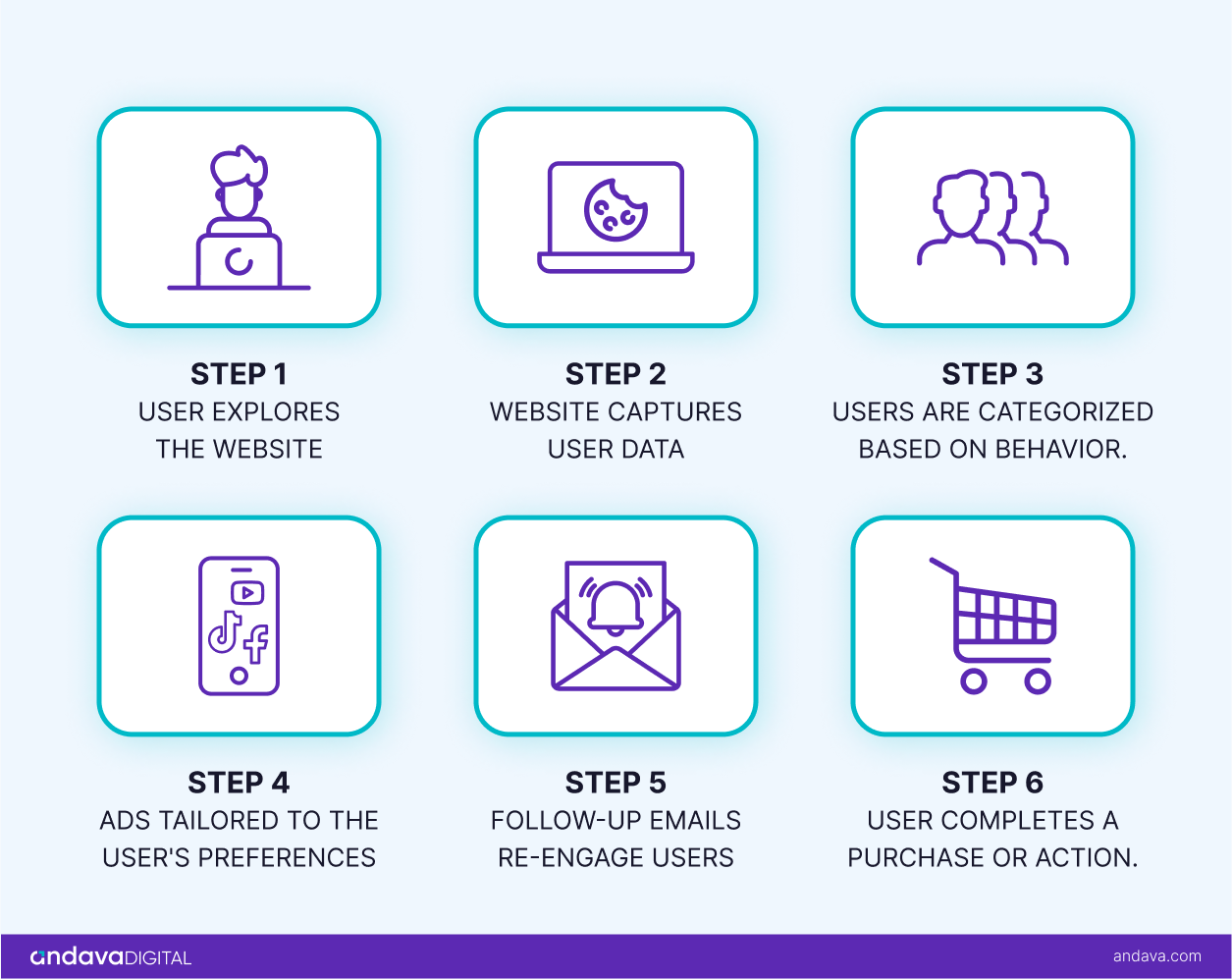
What Is Cross-Channel Marketing?
Through cross-channel marketing, you connect with your customers and potential customers at different points of their customer journeys and through different channels. Using various platforms to reach the same prospect with consistent messaging helps them progress logically from one stage to the next, eventually converting.
Cross-channel marketing involves integrating multiple interconnected and interactive channels that exchange customer information, providing a seamless and comprehensive experience to boost engagement across all channels. The below video from Easy Marketing School will give you a better idea.
Cross Channel Marketing Campaigns
Every channel in cross-channel marketing may be efficient with a specific campaign because customers’ needs vary, and marketers’ knowledge of their ideal clients is necessary.
Keeping this in mind, let’s look at some examples of specific channels that bring better results.
- Email may be an excellent outlet for providers to offer their returning clients discounts by sending automated banners.
- Direct calls can be a great way to reach out to patrons who need more elaborations on their quotes or inquiries.
- Social media platforms such as Facebook, Twitter, Instagram, and YouTube, allow companies to achieve targeted reach and high interaction.
- Creating content consistently on social platforms is key and an AI-Powered Social Media Caption Generator helps you to brainstorm ideas and even create a complete social copy so you’ll never have to worry about what to post next.
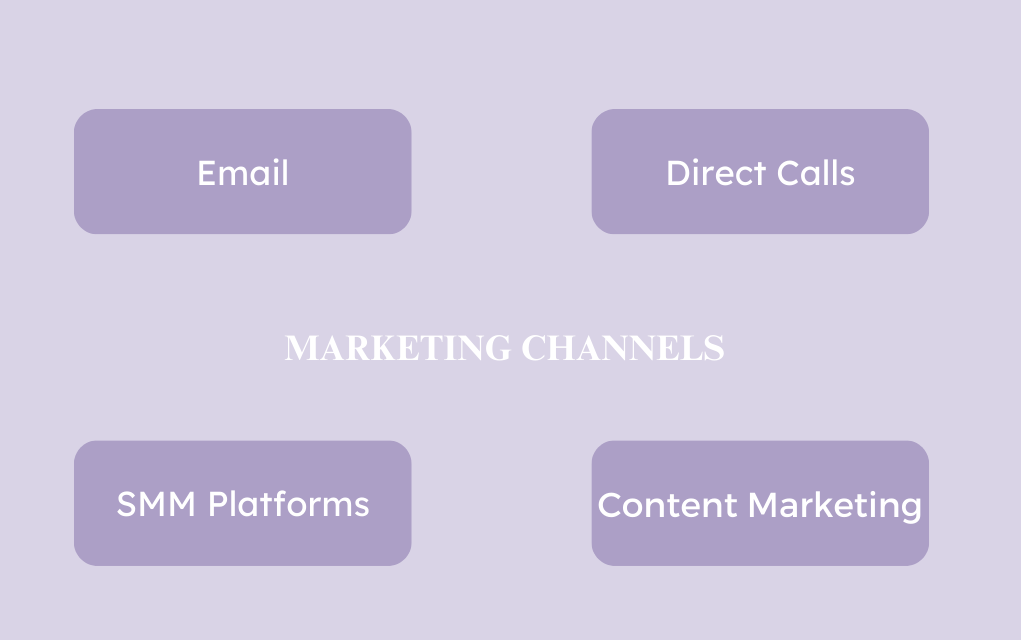
By engaging different touchpoints, you can surround the customer with the brand spirit throughout cross-channel marketing, making the journey more cohesive.
Multichannel, Single-Channel VS Cross-Channel
Marketing
- The single-channel approach implies using only one touchpoint to interact with your customers—a physical store, website, IG account, etc. This process is straightforward and easy for the business but limited in reach and flexibility. Limiting marketing efforts to one channel only misses out on reaching customers who prefer to engage with businesses through other channels.
- Multi-channel marketing involves using more than one channel to reach customers. However, the experiences in each channel are disconnected; each channel has its own messaging and goals, and the customer experiences are not cohesive. As you might guess, this is the least effective strategy, as it leaves customers confused or disengaged when they switch between channels.
- Cross-channel marketing fills the gaps of its predecessor marketing approaches. It integrates multiple customer interaction channels into one synchronized system, ensuring that each touchpoint complements the others. This approach has proven to be the most effective marketing strategy so far, contributing to up to 89% customer retention.
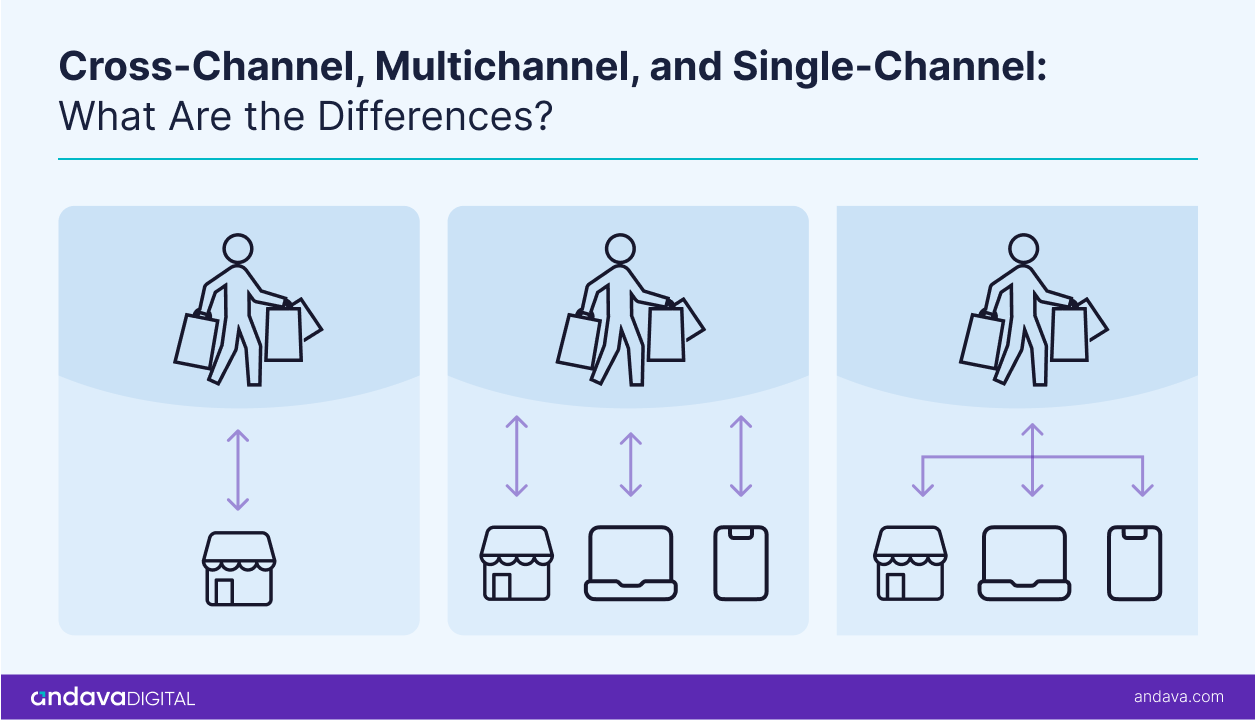
Benefits of Cross-Channel Marketing
As competition in digital marketing escalates and more businesses fight to get the attention of potential customers, it is becoming increasingly important to be by your customers’ side on their customer journey.
There is a need to be constantly present across different marketing channels—when customers are searching for a solution on the web, browsing social media, or checking their emails.
On each channel, customers stand at the crossroads of missing out on your brand or click-through and potentially converting. And if you can give that little push and remind them of your brand through cross-channel marketing, you have a higher chance of conversion.
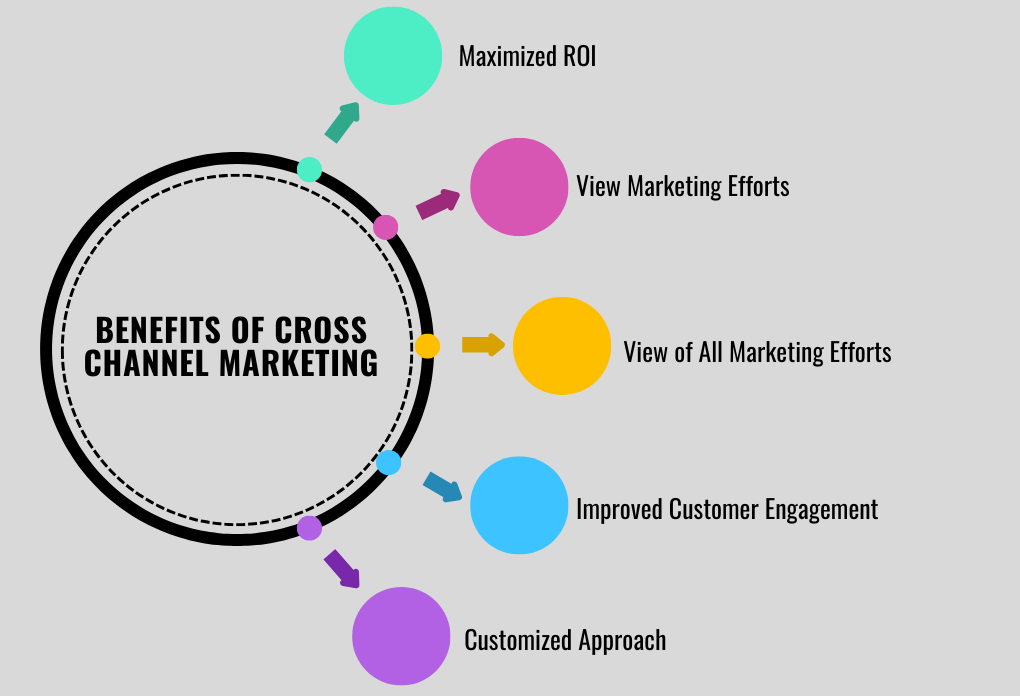
Effective cross-channel marketing is an almost unbeatable growth strategy because it leaves no cracks for customers to slip through. This brings many benefits to your business, including the ones below.
Effective cross-channel marketing can boost conversion rates by up to 31%, but you do need to have your #marketing operations under control to take advantagehttps://t.co/6A4VDjNINe pic.twitter.com/awZrDG229X
— Gavin Heaton (@servantofchaos) August 18, 2024
Maximized Return on Investment (ROI)
On the surface, cross-channel marketing might seem like pouring money into more platforms. And if you’re striving to be present on too many channels at once, that could be the case.
However, when done right, which means being selective of channels, considering your target audience’s preferences and your business’s niche, cross-channel marketing has the potential to bring higher ROI than single-channel marketing.
A case study by PwC proves that optimizing budget allocation among different media results in 0.5%-0.3% additional revenue and 20-25% efficiency gain in marketing spending – all without losing revenue.
Clear View of All Marketing Efforts
If you’re into deep marketing, you know its results are rarely instant, and it requires close monitoring and cross-channel reporting for you to understand what works where.
You can never measure the effectiveness of your overall marketing efforts if you measure channels separately. For example, your social media ads can have low click-through rates, but they may still contribute to overall conversions by creating brand awareness and interest in your products or services.
When you have a clear view of all marketing efforts, you can make informed decisions and allocate budget accordingly, maximizing the impact of your marketing campaigns.
And if you want to see what works best, you need to see the big picture of all your channels and campaigns’ performance. Additionally, you need to understand potential connections between different channels and their impact on each other.
For effective performance monitoring, you need an integrated, cross-channel approach from the beginning that allows easy tracking and reporting of all marketing efforts.
Improved Customer Engagement
Sometimes, when you’re wrecking your brain to understand why the perfectly designed ad or branded content didn’t bring the desired results, there might be a very simple answer – it was not appearing frequently enough to your target audience.
Branded content has a short life span in consumers’ brains. Many won’t be able to recall a single detail about it after a few days because we’re all busy, have a lot going on, and see a constant influx of information.
That’s why the frequency of appearance in front of your target audience matters, along with the quality of content or design.
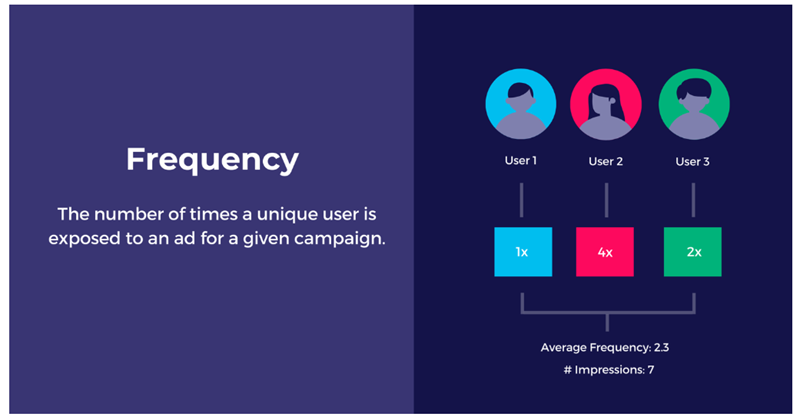
When your busy customer sees an email from you in the morning, spots your ad while scrolling through social media on a lunch break, and hears about you from a friend in the evening, the chances of converting them increase significantly
Customized Approach to Customer Segments
Cross-channel marketing gives you a powerful ability to see the footprint of potential customers’ engagement with your brand. You can track how they engage with you through multiple channels and then use that data to create a customized approach for each segment.
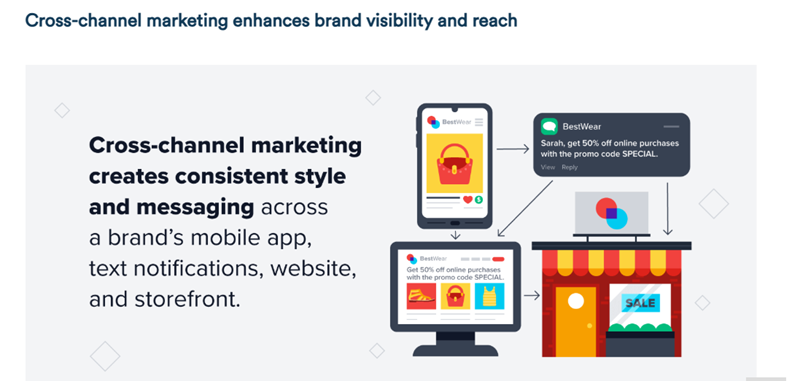
For example, the data can show that a certain segment of potential customers prefer to engage with your brand through social media and email but not so much through traditional advertising. Armed with this information, you can tailor your marketing efforts to focus more on these channels for this segment.
The same goes for the content or message that resonates with each segment. Using cross-channel marketing data, you can determine which type of content or messaging is most effective for each segment and then deliver it consistently through their preferred channels.
So cross-channel marketing allows you to talk to each of your customer segments in their preferred language of choice.
Cost-Effective Marketing
Companies can save marketing budgets by identifying the demographic segments that consume a specific product through a communication platform. Moreover, the consumption level of each age group and gender should be determined to target them separately.
Companies achieve maximum benefit when cross-channel marketing unites with the power of accumulative statistics.
It is possible to monitor the most interactive age group via a particular channel.
For example, young people record the highest interaction through social media platforms. Meanwhile, senior consumers are more affected by direct mail and ringless voicemails. This targeting allows the company to be flexible with spreading its promotion campaigns via different channels with efficient cost control.
How To Build a Winning Cross-Channel Marketing Strategy?
Having a blueprint for the targeted audience and reaching them is the key to a company’s success in formulating a meticulous plan for increasing sales. Some of the essential components are listed and explained below.
It is vital to utilize all the elements in a synchronized and harmonious interworking for the best results.

Define Your Buyer Personas
Understanding who the ideal buyer is for your selling gives essential insight into how to approach them right. Buyer persona models are a broad classification of different types of ideal consumers. Profiles usually include age groups, language preferences, cultural values, purchase power, and financial stability.
As a first step, collect information about consumers’ purchasing patterns, buying habits, means of communication, and the most effective and attractive channels for each segment. Use every data source you have and gather all your findings in a customer data platform.
- Use cookies and URLs to find links with potential buyers.
- View and analyze emails to and from customers.
- Monitor customer service interaction and how they react to advertising campaigns.
- Track how potential clients engage with mailing letters upon delivery.
- Analyze social media accounts for potential clients and categorize them.
When you have customer data consolidated in a single place with a knit structure, you have a good foundation for starting cross-channel marketing.
Identify Customer Segments
When your customer data is collected and formatted clearly, you can analyze it either manually or with tools to separate customers into different segments. There is no set rule for segmenting your customers, so tailor it to fit your business needs.
Here are some common criteria businesses use to segment their customers:
- Demographics (age, gender, location)
- Behavior (purchase history, buying frequency)
- Interests (hobbies, preferences)
- Psychographics (values, attitudes)
If your customer data is in the specialized CRM or CDP systems, you can use built-in segmentation tools or export your data to other software for analysis.
3. Predictive Analytics for Customer Segmentation
Prompt: Leverage Predictive Analytics for Customer Segmentation in [my product/business]. Explain how data-driven insights will be used to identify high-potential customer segments and tailor marketing efforts accordingly. pic.twitter.com/FSZsSOaWyg
— Robin Delta (@heyrobinai) March 14, 2024
Once you have identified different customer segments, you can create targeted marketing strategies and personalized experiences based on each segment’s unique needs and preferences.
Create Customer Journey Maps
A customer journey map is an excellent tool for seeing all the touchpoints your customers use to connect with your brand. It helps you clearly understand the stages they go through when interacting with your brand and identify any pain points or areas for improvement.
To create one, list all the steps your customers take, from discovering your brand to post-purchase activities. Identify all the key channels they have to contact you and the strengths and weaknesses of each.
If you’re just starting with this practice, a simple map with the key touchpoints connected logically might be enough. But if you want to go the extra mile like Starbucks did (see the example below), make sure to include customers’ emotions, needs, and concerns in each of those touchpoints so you know exactly what your customers need at each point.
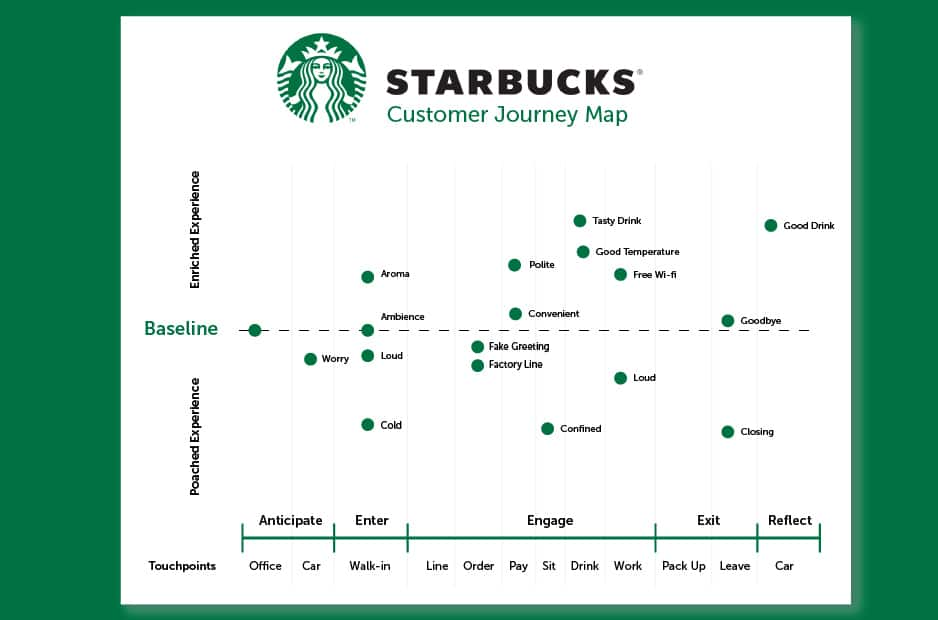
Select the Channels
Knowing which channel to pick and mobilize for the marketing goals can be the difference between success and failure. During cross-channel marketing, all communication mediums can be effective – the only tricky part is choosing the right ones for the right audience and at the right time.
A well-thought-out observation and data analysis will indicate which channel a company should use to interact with its targeted audience. Professional marketing strategists use all the variables of their buyer personas to prognosis consumer behaviors and buying patterns.
For instance, while direct calls or email follow-ups might give good results for specific customer groups, for others, this might be seen as intrusive or annoying, leading to frustration and even customer churn.
Align Content With the Buyer’s Journey
Broadly speaking, your customers have four main points in the customer journey map.
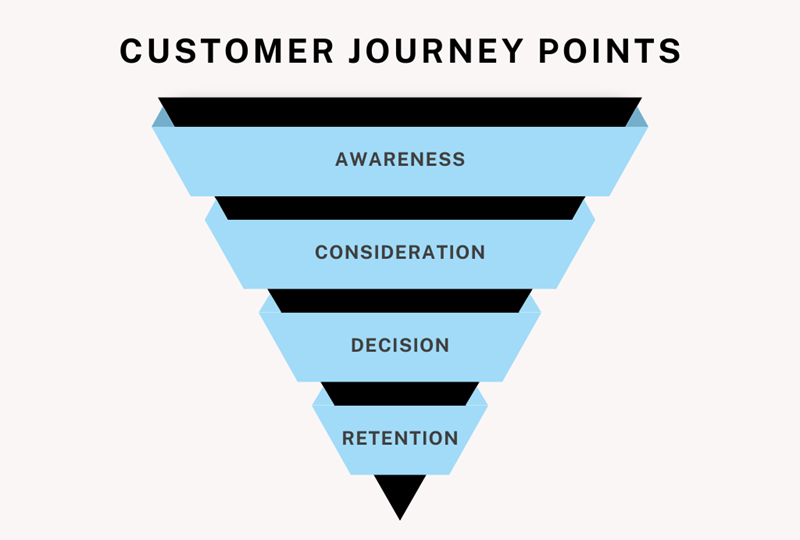
They’re familiarizing themselves with your brand and offerings (awareness), considering you or a competitor to solve an issue (consideration), stopping on your brand but needing some more information to make a purchase (decision), or they’ve already made a decision and are considering whether staying with your brand on a long term basis is viable (retention).
Each of those stages requires a special “sign from the above” to ensure customers are on the right track and move forward.
So, depending on where your target group is, you need to win them with different types of content and messaging.
- For the awareness stage, bring all your best content to your target audience. Actively use competitor comparisons, testimonials, and influencer collaborations to make the first impression just right.
- In the consideration stage, you need to increase customers’ awareness of your unique selling proposition. To seal the deal, use conversion-optimized landing pages, case studies, demos, how-to videos, and educational content.
- When customers reach the decision stage, please provide them with all necessary information through customer reviews, limited-time offers, free trials, and customer support. Make sure to stay connected with them through email marketing or social media.
- For the retention stage, focus on building long-term relationships through personalized experiences and loyalty programs.
Here’s a more detailed review of various content types applicable for each customer journey map stage.
Juggle with Smart Content
Many CRM or CDP tools allow you to utilize the smart content feature. Otherwise, you can activate it in your CMS or by using specialized software.
Smart content is a way to display different content to different customer segments based on predefined rules. For example, you can show a specific promotion to customers who have previously purchased a certain product or display different images on your website based on the customer’s location.
This allows for a more personalized and relevant experience for each customer, increasing their satisfaction and potentially leading to higher conversion rates.
Leverage Social Media
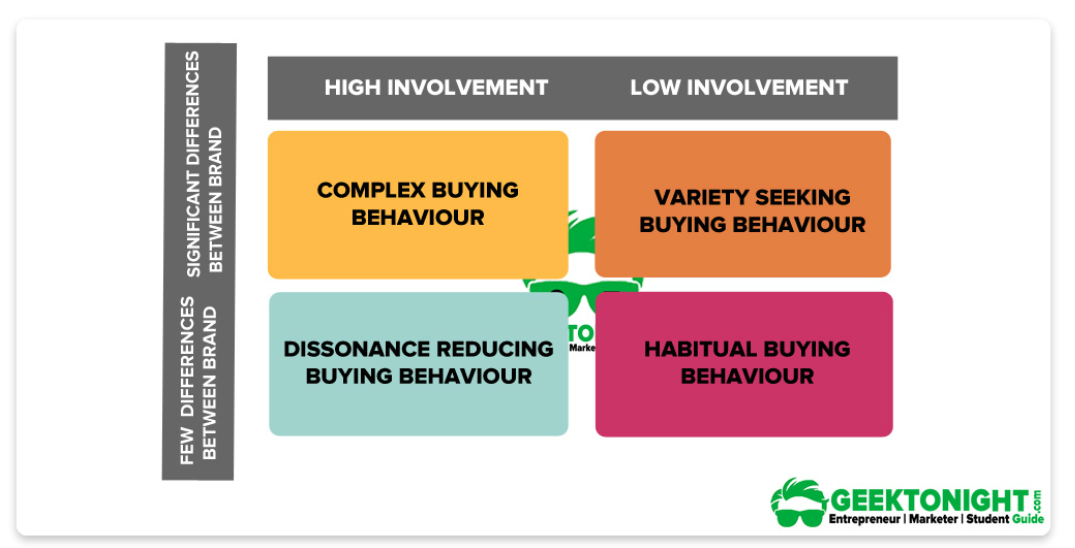
Social media platforms such as Facebook, Instagram, YouTube, and others, provide an opportunity to develop a cross-channel marketing strategy. A strategy that corresponds to visual attractions and interacts with consumers about all their needs.
The statistics social media platforms offer to companies are highly beneficial and help target the right audience in accordance with their buying behavior.
Nowadays, social media platforms have become an integral part of people’s lives. According to Statista, “4.2 billion people around the world now use social media.”
Social media platforms can’t be considered a single channel, and each platform is a unique channel by itself.
According to Forbes, “The key to getting the most out of your business’s social media presence lies in adopting the right platforms.” Marketers have to create different content per channel that aligns with their users and audience. For example, the way to promote a product over Instagram is different from YouTube or LinkedIn, and so on.
Retarget via PPC
PPC stands for “Pay Per Click,” It helps to re-attract the customers interested in a particular product and direct their interest towards that product. This channel concentrates on potential customers who have already expressed a slight interest in a product while browsing the internet.
For example, clients who clicked a post to see more details or spent a couple of seconds staring at a video about that product. The idea here is to surround the customers with the product’s promotions. It helps remind the customer about the product and provides accessibility for a quick purchase decision. It aims to deepen the consumer’s sense of the product’s quality.
PPC services are possible via many digital channels and platforms such as Ad Roll, which many brands have chosen due to the speed of Ad access. Social media platforms also provide a great PPC potential for the targeting options these platforms are characterized by.
Test Your Cross Marketing Campaigns
Testing the validity of marketing campaigns is essential. For that purpose, marketers create control groups consisting of consumers who do not receive any advertising campaigns through marketing channels.
For example, if a marketing campaign targeted 10,000 potential individuals, a percentage of them would be randomly selected and excluded from receiving any promotions. According to Medium, “a control group of 5% would be sufficient.”
Later on, marketers can analyze the results of the targeted and control groups to determine how successful the campaign was. These groups are used to measure the impact and effectiveness of advertising campaigns, the success of one advertising campaign over another, and which campaigns need to be developed.
With this test, companies determine the type of campaigns suitable for each group instead of sending one wrong campaign to everyone.
Consolidate All Your Findings
Companies should collect the results of advertising campaigns across all channels and monitor whether these campaigns are beneficial or not. Such measurements help companies decide which channels need more advertising pumping and which segment needs more focus.
According to Entrepreneur, “The key to making choices you can be proud of — even in times of stress or crisis — is data.”
Consistently promoting the same campaigns will lead to failure because consumer behavior changes, as demonstrated at the top, and companies should be aware of that. Cross-channel marketing campaigns have to evolve in different ways to target the right audience appropriately.
How Top Brands Use Cross-Channel Marketing
Starbucks, Apple, Disney, and other giants manage to stay ahead of the competition and make millions of sales simply because they use a cross-channel marketing strategy. This strategy allows them to generate significant revenue while providing an engaging and seamless customer experience.
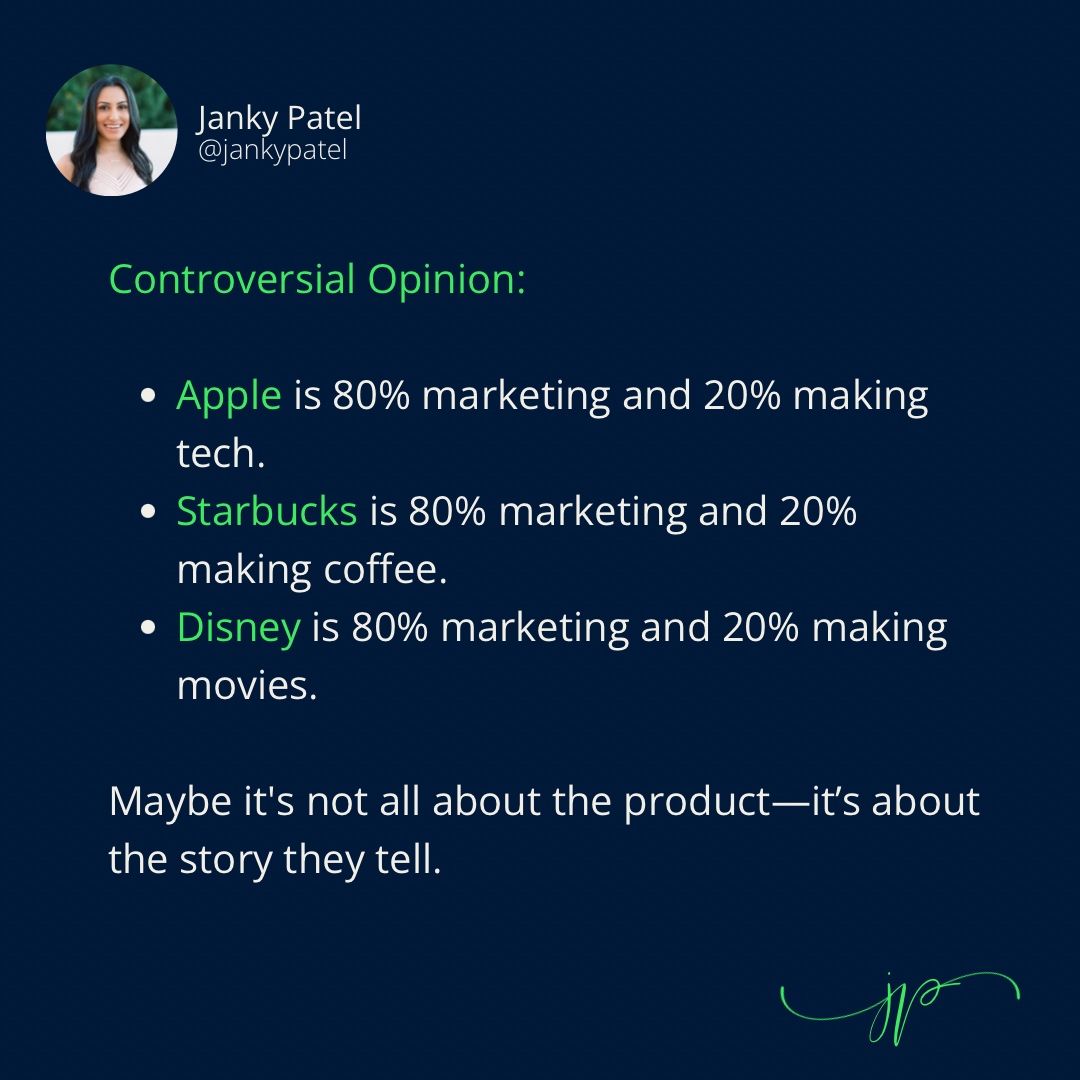
Let’s explore how these companies leverage cross-channel marketing to remain at the forefront of the competition.
Starbucks
What’s said: “I got you coffee.”
What’s heard: “I love you.”
— Starbucks (@Starbucks) April 26, 2023
Starbucks is successfully using cross-channel marketing by merging the online and offline shopping experience through its app. Using a reinforcement learning platform, the app rewards users for purchases and provides personalized recommendations based on their shopping habits. Users also receive notifications for Starbucks’ sales and promotions, increasing visits to the store.
By offering a seamless experience, Starbucks effectively interacts with customers at all levels. Artificial intelligence provides the company with valuable consumer insights that predict customer behavior.
This allows for real-time card checking and reloading from the phone, making purchases simple for users anytime, anywhere.
Apple
As part of its incorporation, Apple published a marketing manifesto: pic.twitter.com/gAwvYchUsP
— Jon Erlichman (@JonErlichman) January 3, 2022
Apple is another master of cross-channel marketing and can serve as an example for other companies that want to thrive in their markets. Just look at the fact that 150 million active iPhone units in the US only.
How do they manage it?
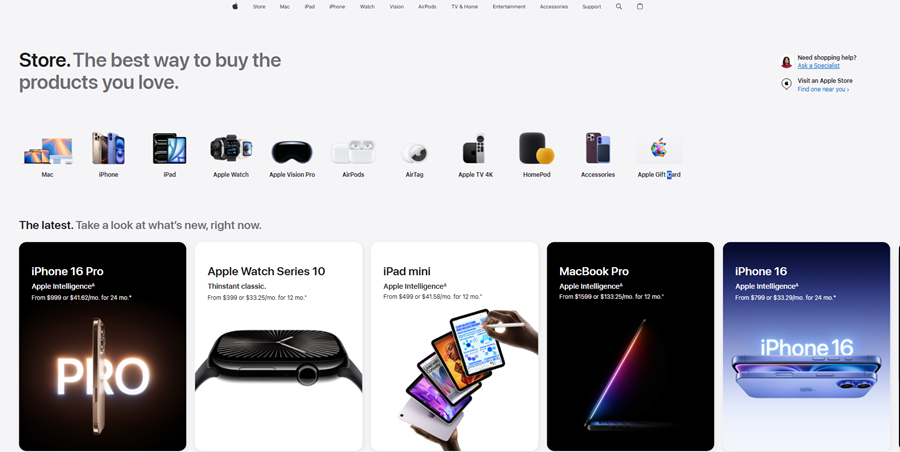
Apple consistently upholds a consistent brand identity across different platforms to drive interest and maintain excitement for its products. Whether it’s through ads, their mobile app, or their website, you can always spot that classic Apple style.
Even their stores feature a minimalist layout and use face-to-face interactions to promote future online purchases.
Disney
When you think of Disney, the first thing that comes to mind is probably the vibrant colors and stunning design. Disney puts a lot of focus on design across all its platforms.
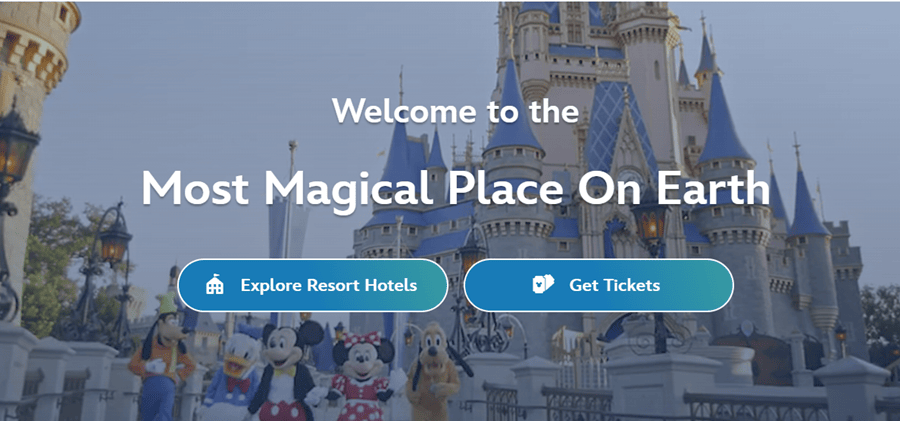
Disney really knows how to keep in touch with their fans through all kinds of ways – TV, movies, theme parks, cool stuff to buy, and even digital stuff. From getting families into theaters with awesome movies to keeping kids entertained on the Disney Channel, they’ve got it all covered.
And let’s not forget about those amazing theme park adventures and streaming services on Disney+. With this clever mix of channels, Disney stays connected with its fans and spreads its magic far and wide.
Take Your Cross-Channel Marketing to the Next Level
Cross-channel marketing has become a must, not just an advantage for any business.
Andava Digital helps organizations move forward by developing digital marketing strategies targeted to their individual goals and objectives — and then implementing those strategies using a spectrum of top digital marketing tools.
Andava Digital provides a wide range of marketing services, from organic traffic and SEO services to social media marketing. In addition to offering designs and development, the company also provides marketing consultation, channel analysis, and Amazon SEO and PPC. With all these services and more, Andava Digital ensures a comprehensive marketing experience for its international clients.